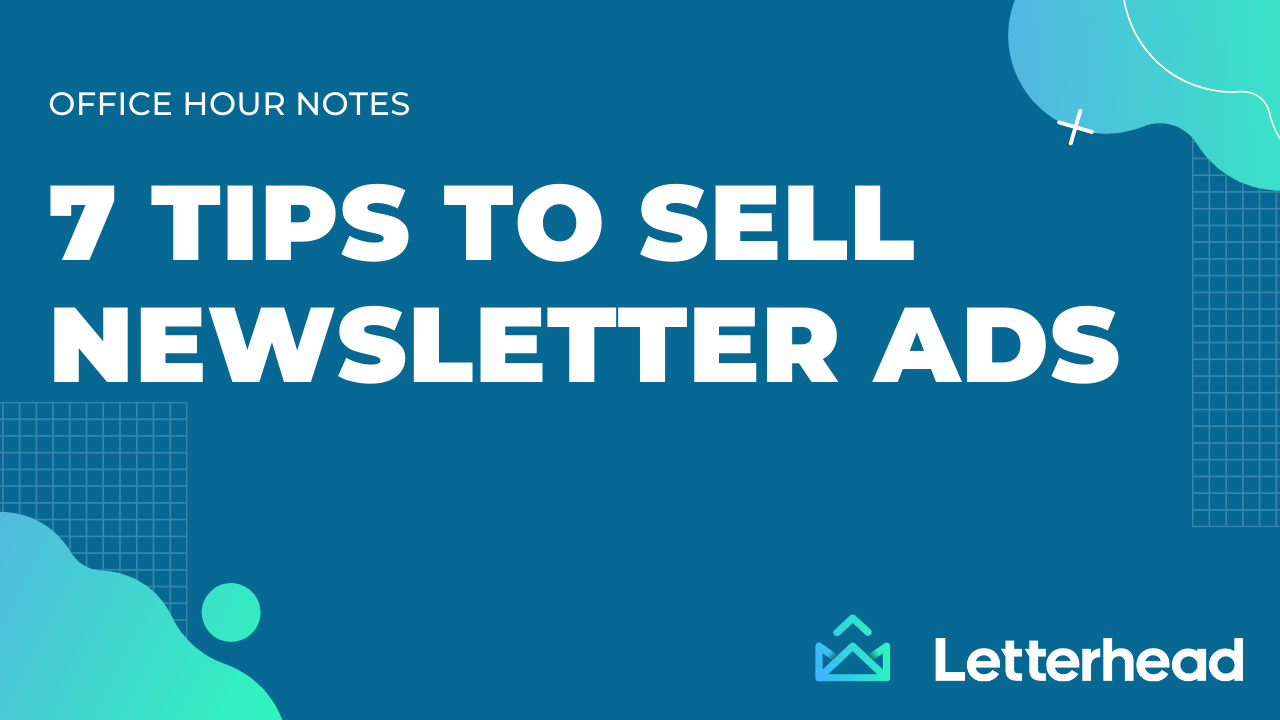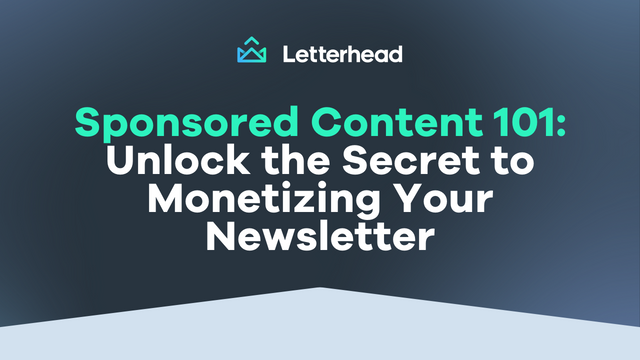Maximizing Ad Revenue: Tips and Tricks for Pricing Your Newsletter Ads Perfectly
Explore seven practical and easy-to-implement advertising formats for newsletters in this breakdown. From newsletter sponsorship to native advertising, learn about different ways to align with a publisher's brand and reach an engaged audience.
Summary: You will learn how to price your newsletter ads and set your initial price to move inventory, what the market will bear, how to match pricing and purchasing structure to the psychology of the ad, and how to add value to a campaign instead of discounting. You will also learn how to determine nominal ad price using CPM rate and subscriber count and suggested CPM ranges for native ads, newsletter sponsorships, banner and text ads, and listing ads. Additionally, you will learn the importance of increasing prices over time and what to do if you're not generating sales or losing deals based on cost.
👉 Download our full monetization guide.
As a newsletter publisher, figuring out how to price your ads can be daunting. You want to ensure you're earning a fair price for the value you provide, but you also want to save yourself and avoid losing potential advertisers. Let's review pricing tips and suggest CPM ranges for newsletter ads.
First, let's cover the basic formula for calculating the nominal ad price. This is the base price for an ad placement before any negotiation or discount is applied. The formula is:
CPM rate (in $) * (Subscriber count / 1,000).
For example, if you have a 100,000-person newsletter and a $10 CPM rate, the nominal ad price would be $1,000 per ad placement.
Let's now examine some recommended CPM ranges for various newsletter advertising formats:
- Native ads & newsletter sponsorships: $20-$50 CPM subscribers
- Banner & text ads: $10-$20 CPM subscribers
- Listing ads: $5-$15 CPM subscribers
Of course, these suggestions should be tailored to your particular situation.
When setting your initial price, it's important to focus on filling your inventory and increasing activity rather than holding out for a higher price with limited sell-through. Price increases over time are a good sign that demand for your ad space is growing.
It's also important to remember that what the market will bear is more important than the formula. No matter the rules and formulas, you should raise prices if you have a high-value niche or always-full inventory with more demand than you can meet. On the other hand, lower prices are better, even if formulas say they should be higher, if you're not making sales and losing deals because of cost.
Matching the pricing and purchasing structure to the psychology of the ad is also critical. For example, a job listing ad should be easy to buy at a low enough price to encourage potential buyers to try it out. But for a native sponsorship, the price should reflect the premium value and require thought, because you want partners who will invest in the relationship with you.
Lastly, instead of discounting, adding value to a campaign can be a more compelling way to show how valuable you are. For example, if an advertiser requests a discount due to budget constraints, consider adding more value for free to the purchase rather than discounting the price. Offering more for the same price not only preserves your total dollar figure but also adds additional value to the campaign for the advertiser.
Ad pricing for a newsletter can be tricky, but if you stick to these principles, you'll be able to charge what your readers are worth.
Download our monetization guide to learn more about making the most of your newsletter.



